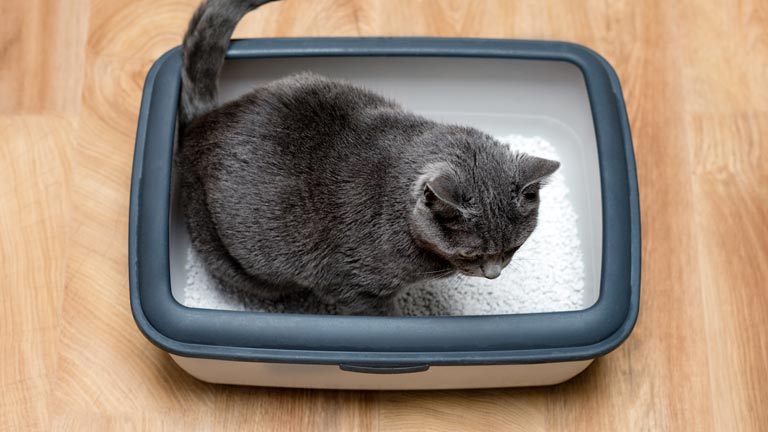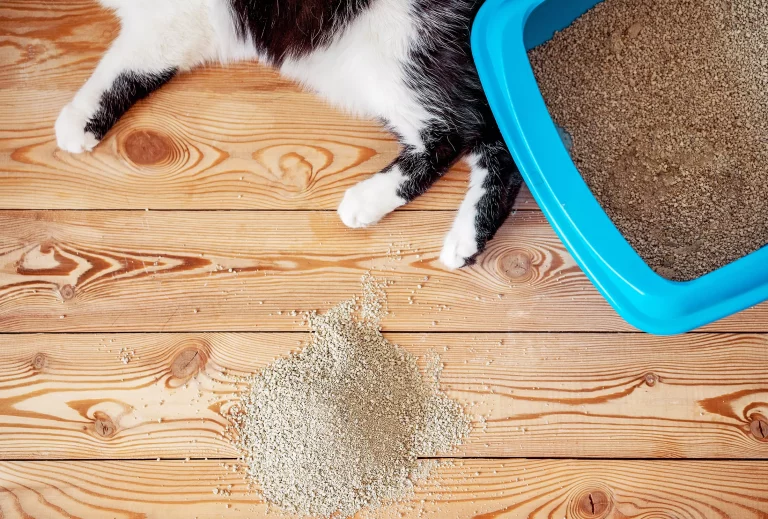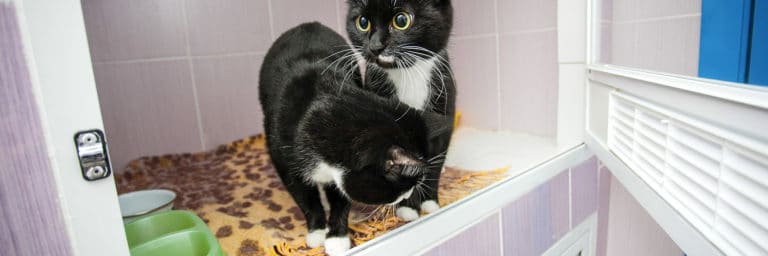How to Litter Train a Kitten
Contents of Article
When should you start litter training your kitten?
Until kittens are around 3 weeks old, they can’t have bowel movements or urinate on their own. Instead, they rely on stimulation from their mom’s tongue or a caregiver’s towel.
When kittens reach 3 or 4 weeks of age, they’ll start going on their own and copying their mom’s digging and covering habits. Kittens who live outside do it in sand or soil. Those who live indoors might start on a towel or other soft surface before learning about the litter box.
If a kitten was orphaned at a young age, they might not have received potty lessons from their mother, but their instincts help them out. Orphaned kittens quickly catch onto the value of burying their waste in a soft substrate like soil or clay.
If you adopted your kitten from a shelter, breeder, or neighbor, he was likely litter trained by the time he was put up for adoption. Your challenge, therefore, is not training your kitten to use a litter box. Instead, your job is to help him get to know the litter boxes in your home.
How long does it take to litter train a kitten?
The answer varies depending on how long your kitten was with his mother, his personality, and how you approach training. Most kittens, however, learn quickly, taking just a day or two to master the litter box.
How to Litter Train Your Kitten
Prepare your kitten’s litter area.
Choose kitten-appropriate litter.
Did you know that kittens and cats need different types of litter?
Kate Barrington says that kittens are natural nibblers. If a kitten takes a bite of clumping clay litter, the litter could expand in his tiny tummy and turn into an insoluble mass. “Instead of using hard-clumping clay litter, give your kitten a biodegradable product or non-clumping clay.” In our article on the best litter for kittens, we recommend Yesterday’s News. It’s a biodegradable, non-clumping product that’s gentle under tender kitten toes.
Your kitten also needs the right litter box.
Like any other cat, kittens need deep, spacious litter boxes. While high sides are as good for kittens as adults, young kittens might need a lower entrance to accommodate their short legs. To learn more, read our article on the best litter boxes for kittens.
Place litter boxes in appropriate locations.
Just as your kitten should have a quiet, safe place to sleep, he benefits from a secluded bathroom area. Choose locations far away from heavy foot traffic, loud conversations, and noisy appliances.
Depending on how adventurous your kitten is and the size of your house, he may require several boxes in multiple rooms or on multiple floors. Young kittens with a limited exploration range might need just one box in a single room.
Time for some introductions. Kitten, meet litter box. Litter box, meet kitten.
Once you’ve set up a litter box or two, pick up your kitten and plop him down in his litter box. He might sniff around for a moment or might hop right out. Or he might surprise you by doing a scratch, squat, and tinkle right then and there!
If he stays in the box long enough, gently grasp his paws and mimic a natural scratching motion. This will help him to understand how the litter box works. Don’t push it—your kitten doesn’t have to use the litter box right now. The main idea is to tell your kitten that the box exists and that he can use it whenever nature calls.
For many kittens, this brief lesson is all they need.
Make the smell connection.
The sense of smell is a crucial part of the way your kitten interprets the world.
If you’re caring for a very young kitten, you can initiate litter training early on by placing soiled stimulation tissues or towels in the litter box. Your kitten’s muscles are still weak, but his sense of smell is strong. When he’s old enough to go on his own, he’ll recognize his smell in the litter box and know what to do.
If your kitten is older and is going on his own, pick up any waste off the floor and place it in the litter box. By placing his distinctive waste smell into the litter box, you create a deep mental connection.
Bring your kitten to the litter box after every nap and meal.
When he grows up, your kitten will probably head to the litter box after waking up from a long nap or after having a meal. Mimic natural patterns by carrying your kitten to the litter box at these opportune moments.
Tips for Successfully Litter Training Your Kitten
If you have multiple kittens, let them teach one another.
Just as kittens learn by watching their mother, they can also learn from other kittens. When one baby catches on to the litter box routine, bring your little students into the room and let them learn by example.
Experiment with different types of litter.
Your kitten might not like the first litter you give him. If training is going more slowly than you’d hoped or your kitten doesn’t seem interested in digging, you may have chosen a litter that doesn’t agree with him. Kittens who were born outside, for example, might have learned to go in dirt and leaves and might not recognize anything else.
Try out various litter box locations.
When you set up your kitten’s litter box, did you put it too far away from his usual hangouts or too close to a loud washing machine? Consider moving the litter box to a more comfortable, accessible location.
Give your kitten positive reinforcement.
The instinct-satisfying nature of a litter box is enough of a reward for most kittens, but some need extra positive reinforcement. Each time your kitten goes into or uses the litter box, reward them with gentle praise and touch.







